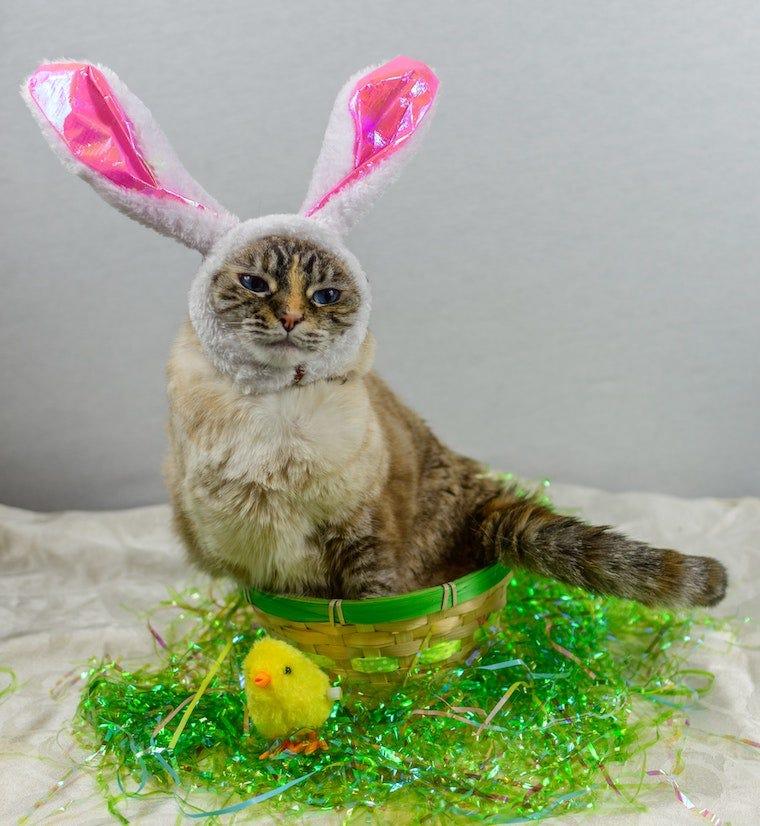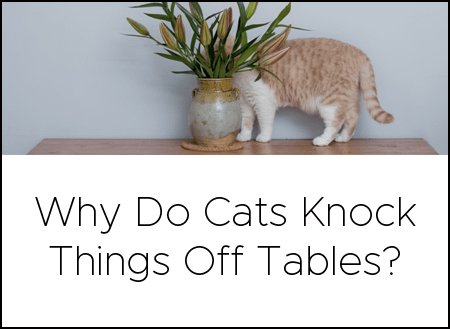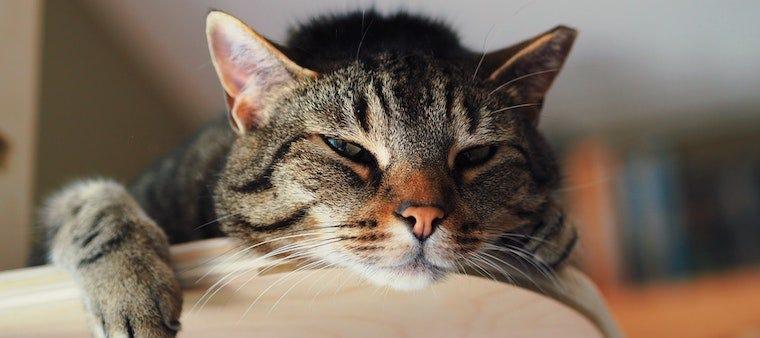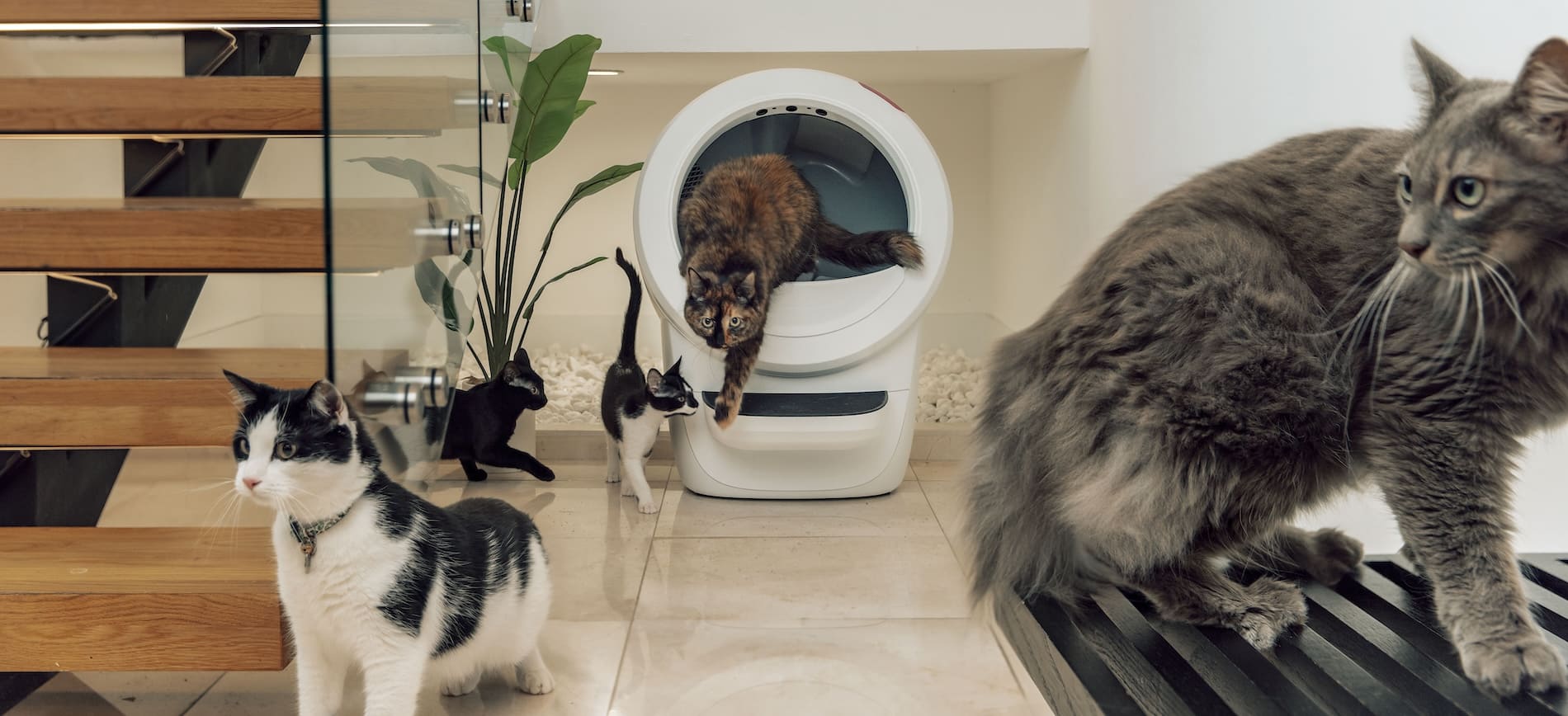One of the many charming parts of celebrating the Easter holiday is piling eggs, candy, and other pastel goodies into an Easter basket. But if you have cats or dogs in the house, it’s a good idea to skip Easter basket grass. Find out why, as well as other Easter-related precautions to take in your pet household.
What is Easter basket grass?
Traditional Easter basket “grass” is made of thin plastic strings. Not only is this filler material not environmentally friendly, it can be potentially dangerous if swallowed by cats or dogs. And let’s not forget curious small children—if swallowed, this plastic grass can also cause digestive issues for the humans in the house.

Why is Easter basket grass bad for cats?
Cats are rather notorious for eating grass. And although Easter basket grass isn’t “real,” cats can still be drawn to the shiny material—playing with it, chewing it, and swallowing it. This is similar to cats playing with (and sometimes ingesting) tinsel on a Christmas tree.
Why is it bad if your cat eats Easter basket grass? Like tinsel, the plastic grass can build up into a tangled knot, get stuck in the stomach and intestines, and result in what veterinarians call an obstruction.
Litter-Robot resident veterinarian Dr. Justine Lee explains that this sort of material “gets wrapped around the base of the tongue, or even stuck in the stomach, while the rest of the string starts slowly passing into the intestines.” This can result in the string essentially sawing through the tongue, esophagus, stomach, and intestines—leading to the need for expensive emergency surgery.
Even if your cat avoids a dangerous obstruction of the intestines, consuming Easter basket grass will likely result in digestive issues, leading to vomiting and diarrhea.
If you see Easter basket grass hanging from your cat’s butt or mouth…
DON’T PULL IT! Doing so could cause severe injury for your cat. Take your cat to the nearest emergency animal clinic so that the veterinary professionals can determine how to remove the material from your cat.
Other Easter precautions to take in pet households
Just say no to flower bouquets – especially lilies
Lilies are undoubtedly the flower of the Easter holiday—and they’re also deadly to cats. We cover this topic in detail in another post, but remember: Ingesting as little as two petals or leaves from a lily plant can result in severe, potentially irreversible acute kidney failure in your cat. Learn more about plants toxic to cats in a post from Dr. Lee.
Don’t let your pets eat candy – especially chocolate
Cats and dogs don’t need sugar. (And in the case of dogs, no xylitol either!) Most pet parents know that chocolate is toxic to dogs, but many don’t realize it’s just as bad for cats. This is because chocolate contains caffeine and theobromine, chemical compounds found in the methylxanthine chemical group. These compounds can cause significant medical issues in cats and dogs. Theobromine in particular negatively affects your pets in multiple ways: it acts as a stimulant, which increases heart rate; it acts as a diuretic, causing increased loss of body fluids; it causes gastrointestinal upset; and it upsets the nervous system.
Finally, a less serious precaution to take around the holiday (but good to follow anyway) includes skipping feeding your pets table scraps like Easter ham. It’s true that cats are carnivores, but they shouldn’t have processed, salty meats.
Enjoy the holiday without any drama (from your pets, anyway) by following these tips: Skip the Easter basket grass, keep an eye on the candy lying around, and actively avoid having lilies in the house. Happy Easter!
Cover photo by Monika Grabkowska on Unsplash









